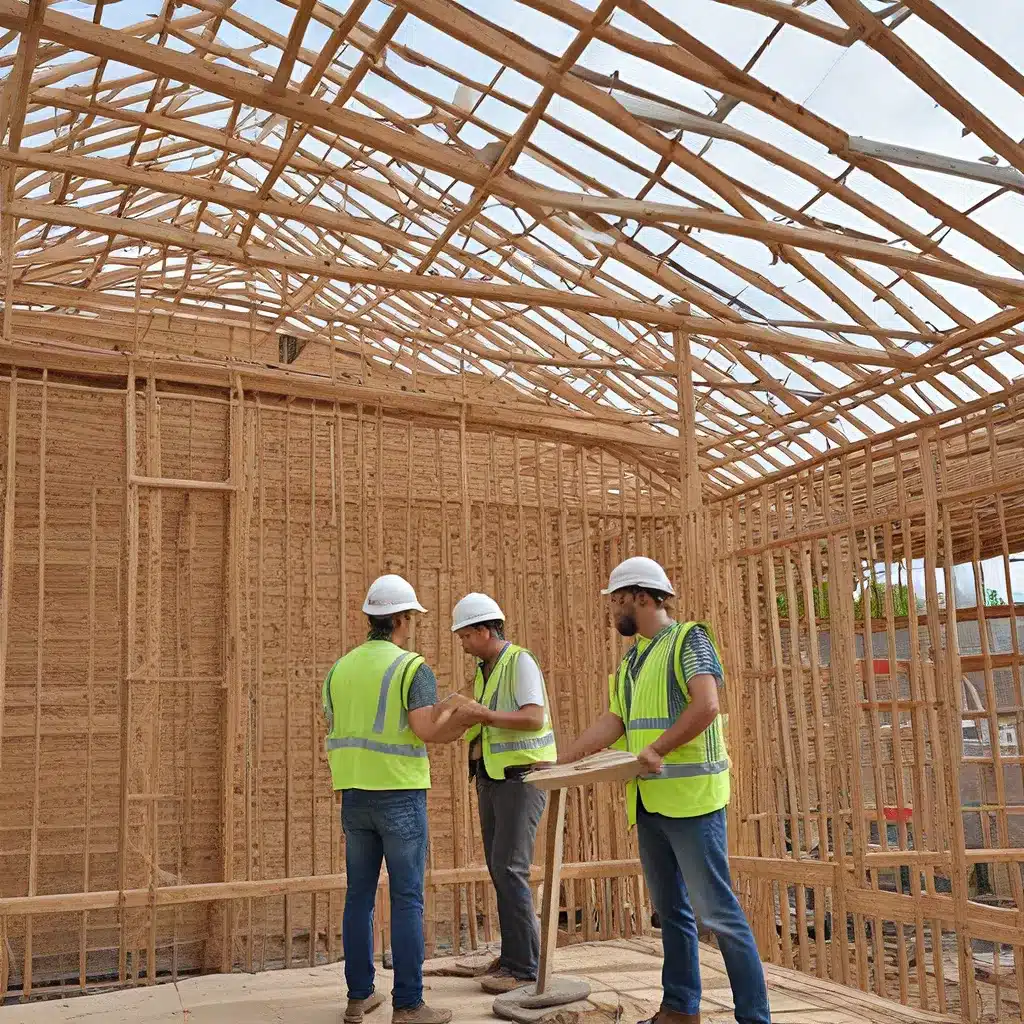
Ahh, the construction industry – where the smell of freshly poured concrete and the cacophony of power tools create a symphony of progress. But hold up, my friends! There’s a new tune in town, and it’s all about sustainable construction. It’s time to trade in our hard hats for something a little greener.
Brewing up a Sustainable Future
Let’s start with a little inspiration from the craft beer industry. You see, those creative brewers have been leading the charge when it comes to sustainable practices. And why shouldn’t they? After all, beer production can be quite the energy and resource hog. But these eco-warriors have found ways to make the brewing process more, well, eco-friendly.
Take Andy Hooper, for example. This sustainable design and brewing expert has made it his mission to educate brewers on the benefits of going green. As he puts it, “Sustainability is not altruism, it’s just the right way to do things.” And he’s got the chops to back it up, having designed and built a 13,000 square-foot facility with a focus on precision, efficiency, and automation.
Hooper’s advice for brewers (and, by extension, the construction industry) is simple: start small and build your way up. Tackle the low-hanging fruit first, like reducing water usage, improving insulation, and training your team. Then, when you’ve got those basics down, you can start investing in fancy-schmancy renewable energy systems or wastewater reclamation.
The key, according to Hooper, is to “constantly assess opportunities to improve, especially if there’s a concurrent improvement in cost, safety, or employee satisfaction.” After all, who doesn’t love a win-win-win situation?
Constructing a Sustainable Future
Alright, let’s shift our focus from beer to the construction industry. Because, let’s be honest, building things can be pretty darn resource-intensive. But fear not, my friends, the construction world is also taking strides towards a more eco-friendly future.
According to a study by EY, the engineering and construction industry is facing increasing demands for decarbonization and environmentally friendly practices. And it’s not just wishful thinking – new regulatory requirements are “compelling companies to disclose information about greenhouse gas emissions and climate-related risks.”
In other words, construction companies can no longer ignore the elephant (or should I say, the carbon footprint) in the room. They’ve got to start getting their sustainability game on point, and fast.
One of the key trends in the industry is “circular construction.” This involves designing, building, and operating structures in a way that minimizes the use of raw materials, maximizes the reuse and recycling of components, and extends the life span and functionality of buildings and structures.
EY’s research also highlights the role of emerging technologies in driving sustainable construction. From artificial intelligence and the internet of things to robotics and 3D printing, these innovations are enabling the industry to become more eco-friendly across the entire lifecycle of buildings and structures.
But it’s not just about the tech – the construction industry is also embracing “sustainable and renewable materials.” As these materials become more advanced, they can substantially contribute to reducing the carbon footprint of the built environment. And with the rise in extreme weather events, construction companies are also focusing on building climate resilience into new and retrofitted projects.
A Fresh Coat of Green Paint
Now, I know what you’re thinking: “This all sounds great, but how can I, as a general contractor, actually implement these sustainable practices?” Well, my friends, let me share a few tips that might just help you turn your business into a green machine.
First and foremost, “start with the data.” Like the brewers, you need to understand your current resource consumption and waste before you can start optimizing. Identify the biggest areas of opportunity, and then start experimenting and validating your results.
For example, you might discover that your compressed air leaks are costing you a fortune. Fixing those leaks could provide a “highest payback in the shortest period of time.” Or maybe your water usage is off the charts, and simple adjustments to your cleaning processes could make a big difference.
But don’t stop there. As you build momentum, start looking into more advanced sustainable technologies, like “wastewater reclamation systems” or “renewable energy generation.” Sure, the upfront investment might be higher, but the long-term savings and environmental benefits can be truly transformative.
And remember, you’re not alone in this journey. Reach out to your industry peers, attend sustainability-focused conferences, and tap into resources like the UC Davis Master Brewers Certificate Program. These communities are an invaluable source of knowledge, inspiration, and support.
Painting the Town Green
As I look out over the construction site, I can’t help but feel a sense of excitement. Sure, the familiar sounds of progress are still there, but there’s a new energy in the air. A greener, cleaner, more sustainable energy that’s reshaping the industry we love.
So, my fellow contractors, it’s time to trade in our old-school ways for a fresh coat of green. Let’s show the world that we’re not just building structures – we’re building a better future. Who’s with me?
Related posts:
No related posts.




